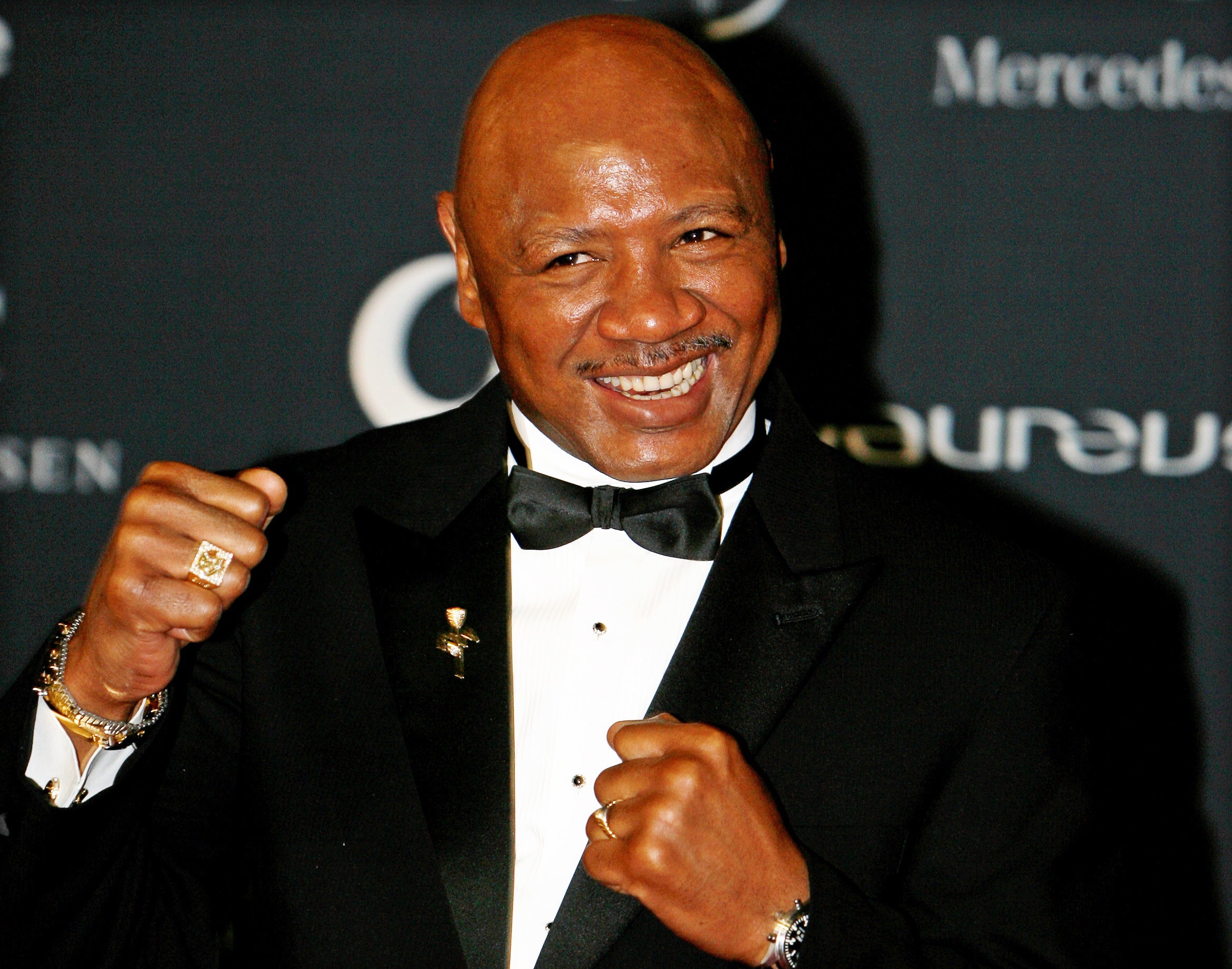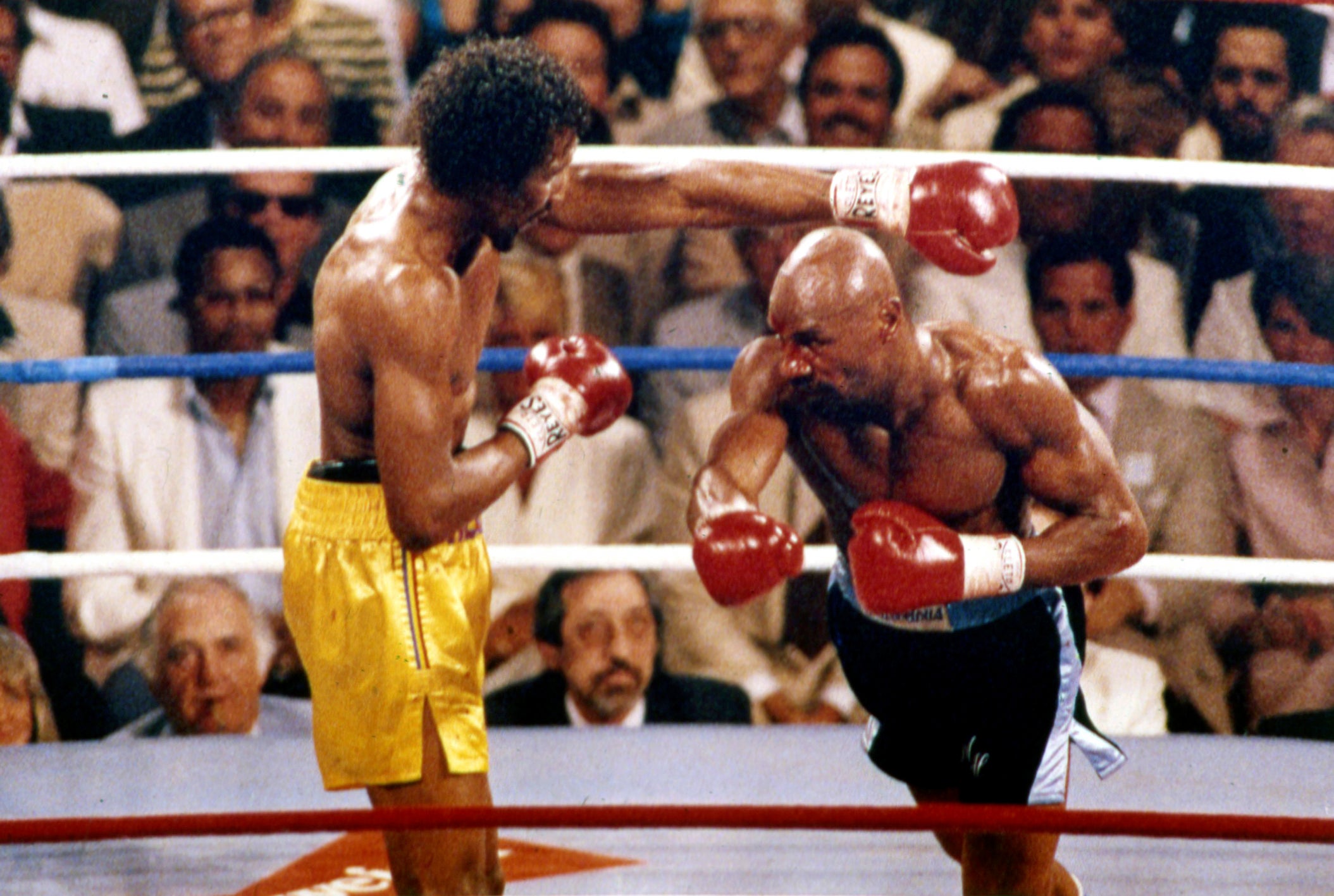Marvin Hagler: Boxing champion and one of the greatest-ever middleweights
A master of the ring, the fighter remained undefeated for a decade – knocking out 52 of his opponents

Your support helps us to tell the story
From reproductive rights to climate change to Big Tech, The Independent is on the ground when the story is developing. Whether it's investigating the financials of Elon Musk's pro-Trump PAC or producing our latest documentary, 'The A Word', which shines a light on the American women fighting for reproductive rights, we know how important it is to parse out the facts from the messaging.
At such a critical moment in US history, we need reporters on the ground. Your donation allows us to keep sending journalists to speak to both sides of the story.
The Independent is trusted by Americans across the entire political spectrum. And unlike many other quality news outlets, we choose not to lock Americans out of our reporting and analysis with paywalls. We believe quality journalism should be available to everyone, paid for by those who can afford it.
Your support makes all the difference.Instantly recognisable with his chiselled features, southpaw stance, shaved head, Fu Manchu moustache and goatee, remaining undefeated for a decade, “Marvelous” Marvin Hagler as he came to style himself, ruled the middleweight division of world boxing with an imperious air. Renowned for his aggressive and uncompromising approach throughout a fourteen-year professional career, such was his punching power in either hand that he won 52 of his 62 victories by knockout. Knocked down just once in his 67 fights, he drew two and lost three.
Born in New Jersey, a child of the notorious Newark ghetto, Marvin Nathaniel Hagler, who has died aged 66, was abandoned by his father, Robert Sims, when he was 11. Raised with his brother and four sisters by their mother, Ida, the family were forced to hide under their beds for three days, dodging bullets during the infamous 1967 race riots. They later made a new start in Brockton, Massachusetts. Receiving little in the way of formal education after leaving school at 14, Hagler went on to spend eight years working in the construction industry.
Having found himself coming off second best in a local street fight, in 1969 Hagler walked into a local boxing gym run by two brothers, Pat and Goody Petronelli. It was they who turned the novice southpaw into New England’s deadliest fighting machine since Rocky Marciano. With the duo staying on to serve as both his trainer and manager throughout his subsequent career, Hagler’s first notable success came in 1973 when he beat Atlanta’s Terry Dobbs to be crowned the Amateur Athletic Union’s National Champion. He was also named the outstanding boxer of the tournament.
Soon turning professional and remaining unbeaten in his first three years, comfortable victories over well-respected opponents such as former Olympic champion, Sugar Ray Seales and Eugene Hart, saw Hagler become a fighter to avoid. Twice defeating British middleweight Kevin Finnegan in 1977, that year he overcame Willie Monroe to win the vacant North American middleweight title. His first tilt at a world title came two years later against New York-based Italian, Vito Antuofermo at Caesars Palace, La Vegas. When the judges ruled the contest a draw, many felt Hagler had been robbed.
With Antuofermo soon losing to Britain’s Alan Minter, Hagler came to Wembley Arena in September 1980, to challenge for both the WBA and WBC crowns. An unfortunate remark by Minter that, “There is no way he was going to lose his title to a black man,” raised the temperature considerably. After Hagler had battered Minter into submission after only three lopsided rounds, he and his seconds were pelted with bottles, glasses and broken seats while leaving the ring. For veteran BBC commentator, Harry Carpenter, “It was the low point of many years at British ringsides.”
Read more:
Happily for Hagler, the victory transformed not only his reputation but also his earning ability. He went on to complete a dozen defences of his titles over the next six years. Winning a close decision over Roberto Duran, other challengers included Fulgencio Obelmejias who he stopped twice; Vito Antuofermo, forced to retire after four rounds; the Syrian, Mustafa Hamsho, again stopped twice and a third British challenger, Tony Sibson, who did not last beyond the sixth round. His most famous fight undoubtedly came against Thomas Hearns in Las Vegas in April 1985.
Though barely lasting eight minutes, the contest between Hagler and “The Hitman” as Hearns was dubbed, has long been considered one of the greatest. It was non-stop action from the opening bell, each boxer totally scorning defence in favour of attack. Hagler himself was soon cut high on his forehead while Hearns sustained a broken hand. Seesawing one way and then the other, a minute into the third round Hagler somehow managed a right hook that felled his opponent. After Hearns again found himself on the canvas, the referee came in to save him from further punishment.
Hagler’s reign would come to an end at Caesars Palace in April, 1987 when, at the hands of Sugar Ray Leonard, he lost both his world titles again in somewhat controversial circumstances. Moving up two weight divisions that night, a recently retired Leonard cleverly called on every ounce of his mobility, experience and ring craft to outwit the more aggressive Hagler. At the end of a closely fought fight, one judge scored it 115-113 in favour of Hagler, another had the same score but for Leonard. Crucially, however, the third judge, JoJo Guerra, scored it 118-110 in Leonard’s favour.

Fourteen months later, having failed in his quest to get a rematch after Leonard chose to retire, Hagler himself would step away from the ring. Despite huge financial inducements to return, unlike many fellow former sportsmen, Hagler stayed both retired and solvent. After appearing in a number of commercials, he subsequently moved to Italy to reinvent himself as an actor. There his films included Indio, Indio 2, and Virtual Weapon. He regularly worked as a ringside analyst alongside Alan Minter. In 1993 he was inducted into the International Boxing Hall of Fame.
Twice married, Hagler had five children with his first wife, Bertha, and two with his second wife, Kay. She survives him together with all the children.
Marvin Hagler, boxer, born 23 May 1954, died 13 March 2021